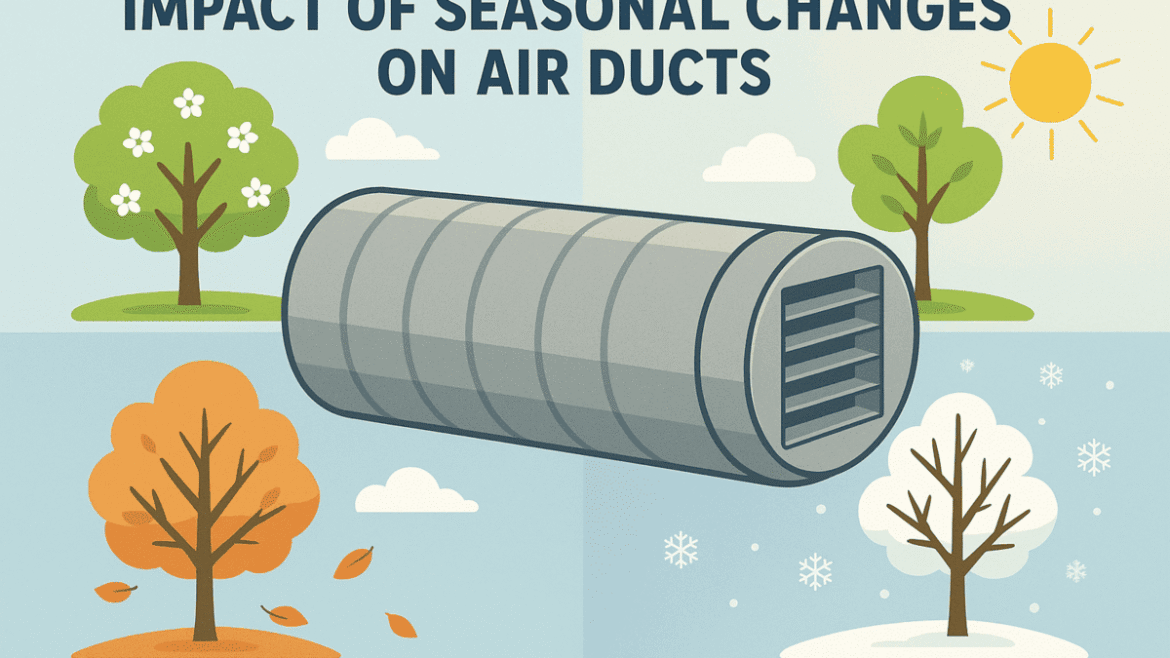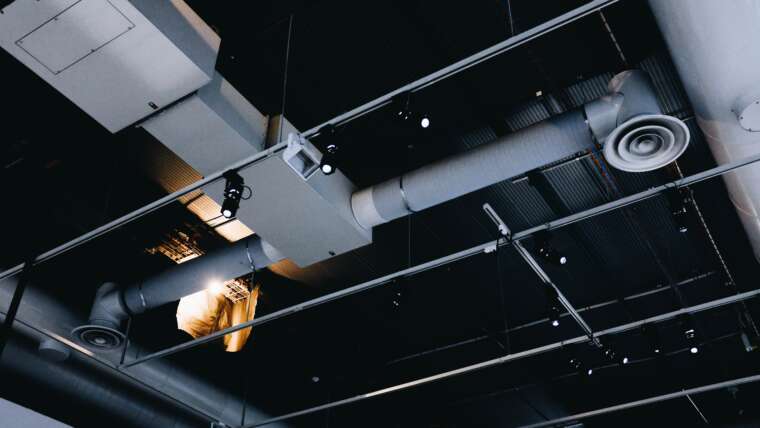
Air duct systems are vital to maintaining indoor air quality and HVAC efficiency. However, their condition and performance are closely tied to the local climate. Whether you’re battling coastal humidity, desert dust, or snowy winters, each weather condition uniquely affects your ducts. Understanding how your regional environment influences duct maintenance helps prevent long-term damage, improves energy efficiency, and protects your indoor air.
Why Climate Matters for HVAC Maintenance
Your HVAC system doesn’t operate in a vacuum—it responds directly to external weather conditions. From temperature swings to humidity levels and airborne particulates, climate affects everything from filter clogging to mold growth. Regular HVAC maintenance and climate awareness go hand in hand, especially in locations with distinct seasons or extreme weather.
Homes in humid regions often suffer from condensation within ductwork, which creates ideal conditions for biological growth. Meanwhile, in arid or dusty climates, airborne particles accumulate quickly inside the system, restricting airflow and putting pressure on the unit. If left unchecked, these conditions lead to costly repairs and reduced system lifespan.
How Seasonal Changes Affect Air Duct Systems
Temperature fluctuations throughout the year place strain on duct materials and system components. During cold months, ducts expand and contract, which may cause joints to loosen or minor leaks to form. In summer, increased usage and high indoor-outdoor temperature differences may intensify pressure on seals and insulation.
This makes seasonal air duct maintenance crucial. An inspection before peak heating or cooling periods allows homeowners to address inefficiencies proactively. A mid-year check for buildup, moisture, or pest intrusions can prevent blockages or system contamination during heavy-use seasons.
If you’ve noticed persistent dust or reduced airflow following seasonal shifts, it may be time to schedule a professional residential air duct cleaning. This not only removes accumulated debris but also identifies potential vulnerabilities before they develop into major issues.
Regional Climate and Air Duct Performance
Different regions come with their own set of maintenance challenges. Understanding these can help homeowners adopt more specific care strategies.
- Humid Climates: Florida, the Gulf Coast, and other high-humidity areas face constant moisture exposure. Without proper airflow, condensation forms in ducts, feeding mildew and bacteria. Mold spores released into the air can cause allergies and respiratory issues. Periodic HVAC sanitizing and mold removal in these areas is not optional—it’s essential.
- Dry and Dusty Climates: Desert areas like Arizona or parts of California experience high dust content in the air. Dust gets pulled into the duct system and settles over time, often reducing efficiency and worsening indoor air quality. These regions benefit greatly from sealed ducts and more frequent filter changes.
- Cold Climates: Northern states see extreme cold in the winter, which leads to contraction in metal ducts. Over time, this stress may result in micro-leaks and energy loss. Sealing technologies such as Aeroseal duct sealing can help mitigate this issue by reinforcing the integrity of your duct system.
Weather Effects on HVAC Systems: Practical Implications
Severe weather events or prolonged extreme conditions can accelerate HVAC wear and tear. Heavy rainstorms might lead to water intrusion; wildfires introduce fine particles that easily bypass standard filters; snow and ice can compromise external components like the outside condenser.
The best protection against these issues is preventive maintenance tailored to your environment. For example, homes affected by high pollen or soot levels should prioritize advanced air filtration and regular duct inspections. Adding a UV light system to your HVAC setup can also significantly reduce biological contaminants, especially in climates prone to high humidity or poor outdoor air quality.

Best Practices for Duct Care in Variable Climates
To extend the life of your HVAC system and ensure indoor comfort year-round, a region-specific maintenance plan is key. Here’s how to adapt:
- Monitor Indoor Air Quality. Regularly check humidity levels and airborne particulate concentrations indoors. High indoor humidity or persistent odors may signal underlying duct problems.
- Change Filters Frequently. Areas with frequent dust storms or pollen exposure should replace HVAC filters more often—ideally every 1–2 months during peak seasons. This protects both the equipment and your health.
- Schedule Biannual Inspections. Having a licensed technician evaluate your system before summer and winter ensures that seasonal vulnerabilities are addressed. These check-ups should include duct integrity, insulation, and moisture control.
- Clean External Units and Duct Openings. Ensure that outside condensers, vents, and intake points remain clear of debris, snow, and plant growth. If exposed to the elements, these components may need cleaning or adjustment — outside condenser cleaning services are particularly helpful post-storm or at the start of spring.
- Control Moisture in the System. Condensation buildup should never be ignored. Routine inspections, insulation of exposed duct sections, and targeted solutions like dehumidifiers or UV sanitizers help control internal moisture and prevent mold development.
When to Consider Professional Intervention
Homeowners can handle filter changes and basic inspections, but climate-related damage often goes unseen. If you notice signs like:
- Increased energy bills without higher usage
- Musty smells or allergy symptoms indoors
- Uneven airflow or frequent thermostat adjustments
- Dust accumulation despite regular cleaning
Then it’s time to call in the experts. Services such as HVAC mold remediation or advanced leak sealing can restore airflow efficiency and prevent indoor health risks. These are especially important in homes where seasonal moisture or dust levels rise quickly.
Tailoring Maintenance to Your Climate
Your duct system is the respiratory system of your home. Just like the human body, it reacts differently based on the environment. Those living in coastal areas need to watch for salt corrosion and moisture. In mountain zones, elevation impacts pressure and air density, which can alter system balance.
Don’t assume a one-size-fits-all solution will suffice. Customizing your duct care plan based on climate conditions ensures better comfort, lower utility costs, and healthier air. For commercial properties or large residences, a comprehensive duct cleaning plan may be necessary to account for extensive system exposure.
Conclusion
Climate isn’t just a background factor—it’s one of the primary drivers of wear and efficiency loss in HVAC systems. From mold in moist environments to leaks in freezing zones, the relationship between air ducts and different climates requires informed, proactive maintenance. By understanding the impact of seasonal changes on air ducts, homeowners can stay ahead of problems, avoid costly repairs, and maintain a healthier indoor environment.
Need help preparing your HVAC system for changing seasons or dealing with climate-specific duct issues? Schedule your residential air duct service with Promaster today, and protect your home’s air where it matters most.



